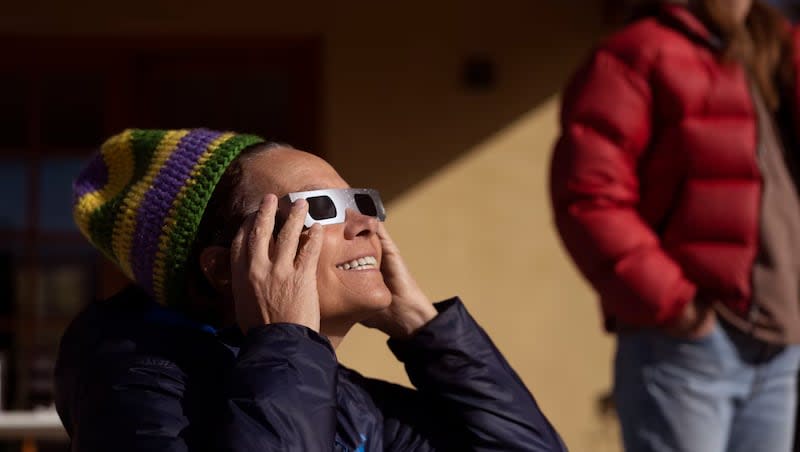What you need to know about viewing Monday’s solar eclipse

On April 8, people in Utah will be able to watch a solar eclipse, along with millions of other Americans. A solar eclipse occurs when “the silhouette of the moon completely covers the sun, leaving only the sun’s corona visible around its edges,” per the Clark Planetarium in Salt Lake City. Total solar eclipses are rare, with the next one set to occur in 2044.
For this event, the eclipse’s path of totality encompasses areas from Mexico to Maine.
While Utah does not lie on the path of totality, onlookers in Salt Lake City will experience the eclipse at near 50% totality, according to NASA’s eclipse map. The phenomenon begins at around 11:25 a.m. in Utah and will be viewable until 1:40 p.m.
John Armstrong, director of the Ott Planetarium at Weber State University, told KSL.com that St. George viewers will experience 52% totality and viewers in southeastern Utah will see 60% totality.
Weather forecasts in various parts of the state call for at least partially sunny skies, making for good viewing conditions.
To find exact times and levels of totality, viewers can input their location into this tool on NASA’s website.
How to watch the partial solar eclipse in Utah
Watching the eclipse calls for proper eyewear and caution. Looking directly at the sun is likely to cause eye damage. As previously reported by the Deseret News, “Our pupils grow in size during the dimming of the sun, and once the sun starts to reappear, it will severely damage our eyes more, since our dilated pupils are allowing more light in.”
NASA recommends using specialized solar eclipse glasses to protect your eyes while still taking in the view. These glasses have solar filters that are 1,000 times stronger than those of regular sunglasses, the American Astronomical Society said. They can be purchased at “science museums, planetariums, astronomy trade shows and some college astronomy departments,” per earlier Deseret News reporting.
Without eclipse glasses, viewers can also use the indirect viewing method, which requires them to use an object with holes to project the eclipse onto another surface.
“A colander makes a great eclipse projector,” Patrick Wiggins, a NASA/JPL solar system ambassador to Utah, told KSL.com.
“You don’t look through the holes of colander at the sun, you let the light go through the holes and down onto the ground where you will see a myriad number of eclipses — this is a simple way of seeing the eclipse in action without damaging your eyes,” he continued.
Viewers may also use specialized eclipse glasses already in their possession, though they should ensure the glasses are not damaged before use.
